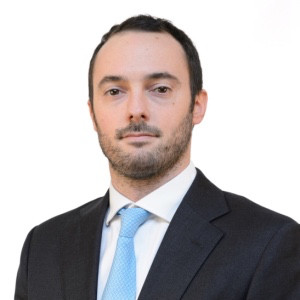Can anybody shine some light on the formula here. On Investopedia the BEP=Fix costs/marginal profit=N.customers/products, there is no other formula. I get extremely confused when they ask for breakeven point in years. How to tackle this calculation and not get confused with the payback period? Thanks
BREAK EVEN POINT=N. OF YEARS

Payback period = investment costs / cash flow per year (revenue-costs) = how many years you need to get back what you invested
Break-even in years = fixed costs = (revenues - variable costs) = at what year you will achieve 0 profits
Example:
- Imagine you want to open an ice cream shop
- Initial investment is 50 k EUR
- revenue is 10 k in Year 1, 20 k in Year 2, 30 k in Year 3, 40 k in Year 4 and 50 k in Year 5
- Fixed costs are 10 k and variable costs are 20 k per year
Break-even in years you will achieve in Year 3 (revenues - variable costs = 10 k which is equal 10 k in fixed costs) – so you will arrive to 0 in terms of your profits
Payback period you will achieve in Year 5 (to be precise in 4,8 years) because in Year 3 you will have already 80 k EUR cumulative loss (investment + costs loss), in Year 4 you will have 40 k cumulative EUR loss, and in Year 5 you will have 10 k EUR cumulative profit.
Best,
Daniel

Hi!
You can calculate a break even point for any fixed reference (fixed yearly costs, investment spend, input utilized, etc.) and any variable (break even volume, break even price, break even duration, etc.). The formula in general is:
[fixed reference] / [value of the variable per unit] = break even point
So if your fixed reference is investment (let's say 21 million euros) and your variable is yearly profit (let's say 7 million EUR), the your break even point is the number of years it takes for the variable to reach the fixed reference. So the formula becomes:
Break Even Point = Investment / Profit = (21m EUR) / (7m EUR/year)) = 3 years
Cheers, Sidi
Hi!
The main difference between Payback (PB) and breakeven (BE) is that PB is related to the years needed to pay back an initial investment, while BE is the specific period in which the Marginal Profit equals the Fixed Costs.
More in detail, Marginal Profit = Revenues - Variable Costs, so the formula can be written also as Fixed Costs = Revenues - Variable Costs.
Generally speaking, you need to think about the time required to cover your Fixed Costs.
To avoid confusion, if the problem is related to an investment it will always involve a Payback period. Otherwise, you will need to focus on the Breakeven point.
P.S. Remember that you can be asked to calculate Breakeven point both in terms of time (period) both in terms of quantity / volumes required to cover your fixed costs.

Hello,
Here you can find a clear answer with some examples:
https://www.business-case-analysis.com/payback-period.html
Hope it helps,
Luca

Hello!
In a nutshell:
A company's payback period is concerned with the number of periods needed to pay back an initial investment with positive net income, while a company's breakeven point is concerned with the specific period in which its revenue will equal total costs and its net income will be zero
Cheers,
Clara

Hi there,
in terms of breakeven specifically, the formula that you found on Investopedia can be derived as follows:
P*V-c*V-FC=0
<-> V= FC/(p-c)
However, if you have to calculate the number of years to breakeven, you have to check in which year profits will be equal or larger than zero. Besides using the approach mentioned by Daniel, you can calculate it dividing the volume V to reach breakeven defined as before by the average volume expected per year.
Hope this helps,
Francesco













